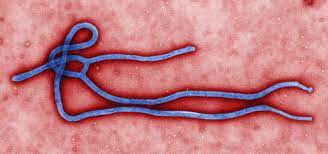September 9, 2024
Researchers have unveiled a groundbreaking technique that could significantly enhance how we visualize internal organs by rendering overlying skin tissues “invisible.” Utilizing a common food dye, with minor modifications, this innovative method allows for the transparent viewing of skin under visible light, potentially transforming medical diagnostics.
Transforming Medical Diagnostics
The novel approach, involving the topical application of a food-safe dye, has shown promise in animal testing across various medical applications. This technique could revolutionize how doctors locate injuries, monitor digestive disorders, and detect cancers with unprecedented clarity.
“Looking forward, this technology could make veins more visible for drawing blood, simplify laser-based tattoo removal, or assist in early cancer detection and treatment,” said Dr. Guosong Hong, a lead researcher from Stanford University.
From Optical Theories to Medical Practice
The research team delved into how light interacts with biological tissues containing dyes. By manipulating refractive indices—the measure of how light bends and scatters—they achieved the transparency effect. This work builds on fundamental optical theories, including the Kramers-Kronig relations and Lorentz oscillation, explored in physics textbooks from the 1970s and 1980s.
Graduate researcher Nick Rommelfanger played a pivotal role by bridging these optical theories with their practical applications. His investigation identified tartrazine (FD & C Yellow 5) as a crucial component for this process.
“We realized that modifications making materials transparent to microwaves could be adapted for visible light applications in medicine,” Rommelfanger explained.
Lab Tests and Future Prospects
In laboratory tests, the researchers applied a temporary tartrazine solution to mice, making their skin transparent and revealing intricate details such as blood vessels in the brain and internal movements in the abdomen. The transparency effect was temporary and faded after rinsing, leaving no long-term effects.
Zihao Ou, the study’s lead author, managed the experimental phase and emphasized the importance of precise dye evaluation. An ellipsometer, typically used in semiconductor manufacturing, played a crucial role in predicting the optical properties of the dyes.
Support and Impact
Richard Nash from the National Science Foundation (NSF) highlighted the importance of accessible advanced research tools. “While a basic tool like an ellipsometer might not usually grab headlines, it is essential for unconventional uses like this,” Nash said.
Dr. Hong also credited NSF support for the project’s success, especially during the challenging pandemic period. “NSF’s support was crucial in exploring new areas of research,” he noted.
Adam Wax, an NSF Program Officer, praised the team’s novel application of fundamental physics. “The team has used the Kramers-Kronig relationship in an exciting new way, demonstrating how a strongly absorbing dye can make skin transparent,” Wax said.
Looking Ahead
This breakthrough in skin transparency holds promise for various biological and medical applications, including enhanced diagnostic imaging and improved cancer treatments. As Dr. Hong’s team continues to explore this field, the future of medical imaging appears clear.
It is important to note that while this technique has shown promising results in animal studies, it has not yet been tested on humans. The use of dyes in medical applications must adhere to strict safety guidelines and should only be applied under proper medical supervision.
Video Credit: Keyi “Onyx” Li/U.S. National Science Foundation
The study is published in the journal Science.










